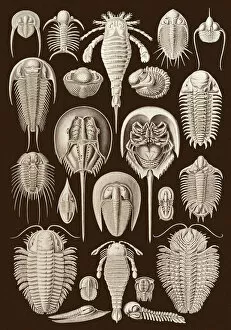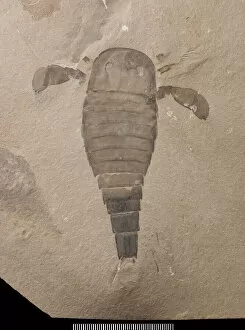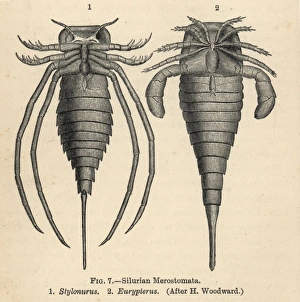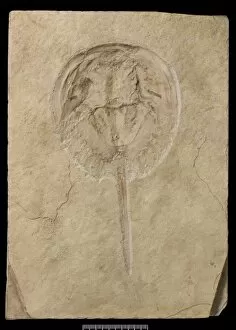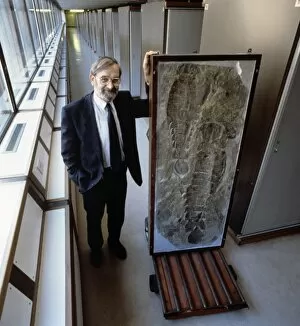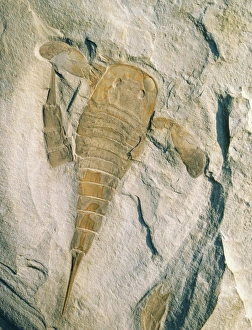Merostomata Collection
"Unveiling the Ancient Sea Scorpions: Merostomata in Aspidonia's Historical Artwork, 1899" Step back in time and explore the fascinating world of Merostomata
All Professionally Made to Order for Quick Shipping
"Unveiling the Ancient Sea Scorpions: Merostomata in Aspidonia's Historical Artwork, 1899" Step back in time and explore the fascinating world of Merostomata, commonly known as sea scorpions. Aspidonia's historical artwork from 1899 takes us on a journey through their prehistoric existence. Among these ancient creatures is Eurypterus, a fossil eurypterid that roamed the oceans during the Silurian period. With its elongated body and menacing pincers, it was truly a formidable predator of its time. The Silurian merostomata or sea scorpions also included Pterygotus, another giant water scorpion from the Paleozoic Era. Its massive size and sharp appendages made it one of the dominant predators in ancient seas. Eurypterus tetragonophthalmus, found in Europe during the Silurian period, showcases intricate details preserved over millions of years. These fossils provide valuable insights into their anatomy and behavior. Mesolimulus, a fossil horseshoe crab discovered through fossilization processes, offers glimpses into an evolutionary link between modern-day arthropods and their ancient counterparts. Not to be forgotten is Eurypterius lacustris – a sea scorpion that thrived in freshwater environments. Its adaptation to different habitats highlights their remarkable resilience throughout history. Lastly, we encounter Pterygotus anglicus – yet another giant water scorpion from the Paleozoic Era. This colossal creature ruled both land and water with its powerful limbs and predatory instincts. As we marvel at these extraordinary creatures captured within fossils and depicted by Aspidonia's artistic renderings from 1899, we gain appreciation for Earth's rich natural history. The story continues to unfold as scientists uncover more secrets hidden deep within our planet's past.

